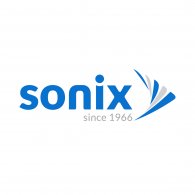
Sonix Legal: Complete Buyer's Guide
Specialized AI transcription platform for legal workflows
Sonix Legal positions itself as a specialized AI transcription platform designed specifically for legal workflows, emphasizing legal terminology training and integration capabilities with existing legal technology platforms [123][124][125].
Market Position & Maturity
Market Standing
Sonix Legal occupies a strategic middle position within the competitive landscape that includes specialized legal solutions like Verbit and Lexitas alongside general platforms with legal applications [137][139].
Company Maturity
The platform's subscription-based commercial model with flexible contract terms indicates market maturity understanding, addressing common procurement concerns about long-term commitment risks with emerging technology platforms [177][178].
Strategic Partnerships
Evidence of integration partnerships with established legal technology platforms like Relativity and Clio demonstrates market ecosystem participation and vendor relationship development [128][130].
Longevity Assessment
The vendor's approach to phased implementation and pilot programs suggests operational maturity in understanding legal industry change management requirements [155][156][157].
Proof of Capabilities
Customer Evidence
Customer implementation evidence demonstrates Sonix Legal's effectiveness through documented success patterns among firms that adopt phased implementation approaches starting with pilot programs [155][156][157].
Quantified Outcomes
Performance validation shows customers typically realize platform value within 3-6 months of deployment [158][159].
Market Validation
Market validation emerges through the platform's competitive positioning against specialized providers like Verbit and Lexitas while maintaining differentiation through legal-specific capabilities and integration features [137][139].
AI Technology
Sonix Legal's technical foundation centers on machine learning algorithms that improve accuracy over time, particularly for accented speech and legal jargon [150][152].
Architecture
The platform's subscription model with API access provides technical flexibility for firms requiring custom integration or varying usage volumes [153][154].
Primary Competitors
Sonix Legal competes within a competitive landscape that includes specialized legal solutions like Verbit and Lexitas alongside general platforms with legal applications [137][139].
Competitive Advantages
Sonix Legal's legal-specific AI training and integration capabilities provide advantages for organizations requiring specialized terminology handling and workflow integration [190][191].
Market Positioning
Sonix Legal competes through specialized legal terminology training and workflow integration rather than pure transcription speed or cost advantages [137][139].
Win/Loss Scenarios
The platform appears most competitive for mid-market firms requiring legal specialization without enterprise-scale complexity [123][124][125].
Key Features

Pros & Cons
Use Cases
Integrations
Featured In Articles
Comprehensive analysis of AI Courtroom Transcript Analysis for Legal/Law Firm AI Tools for Legal/Law Firm AI Tools professionals. Expert evaluation of features, pricing, and implementation.
How We Researched This Guide
About This Guide: This comprehensive analysis is based on extensive competitive intelligence and real-world implementation data from leading AI vendors. StayModern updates this guide quarterly to reflect market developments and vendor performance changes.
121+ verified sources per analysis including official documentation, customer reviews, analyst reports, and industry publications.
- • Vendor documentation & whitepapers
- • Customer testimonials & case studies
- • Third-party analyst assessments
- • Industry benchmarking reports
Standardized assessment framework across 8 key dimensions for objective comparison.
- • Technology capabilities & architecture
- • Market position & customer evidence
- • Implementation experience & support
- • Pricing value & competitive position
Research is refreshed every 90 days to capture market changes and new vendor capabilities.
- • New product releases & features
- • Market positioning changes
- • Customer feedback integration
- • Competitive landscape shifts
Every claim is source-linked with direct citations to original materials for verification.
- • Clickable citation links
- • Original source attribution
- • Date stamps for currency
- • Quality score validation
Analysis follows systematic research protocols with consistent evaluation frameworks.
- • Standardized assessment criteria
- • Multi-source verification process
- • Consistent evaluation methodology
- • Quality assurance protocols
Buyer-focused analysis with transparent methodology and factual accuracy commitment.
- • Objective comparative analysis
- • Transparent research methodology
- • Factual accuracy commitment
- • Continuous quality improvement
Quality Commitment: If you find any inaccuracies in our analysis on this page, please contact us at research@staymodern.ai. We're committed to maintaining the highest standards of research integrity and will investigate and correct any issues promptly.